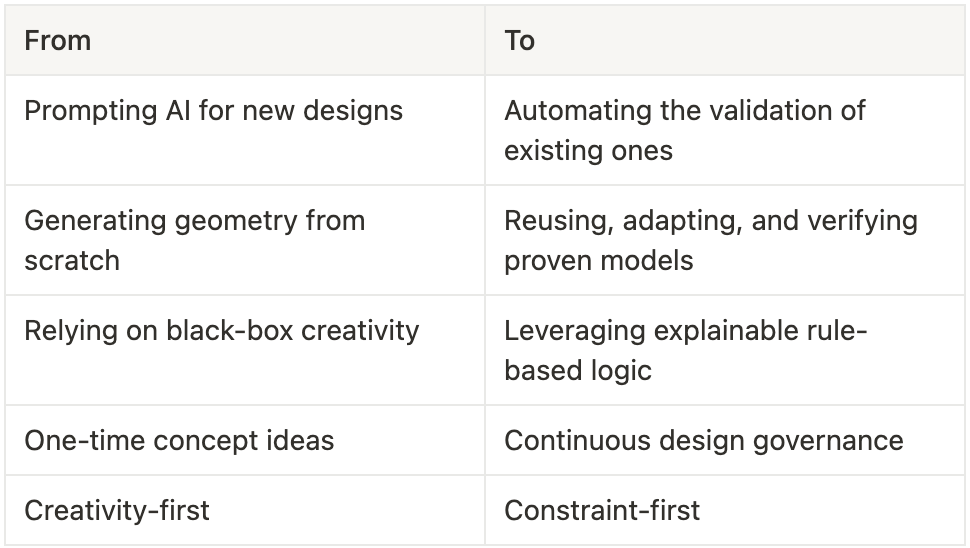
Generative engineering
Digital transformation isn’t the endgame — it’s the beginning. Discover how Generative AI and Dessia’s explainable platform are shaping the next era of continuous, intelligent engineering.
6 min reading
Forget design prompts and flashy renderings, real engineering transformation won’t come from speculative generative AI. The real advantage? Capturing and scaling the logic your best engineers already use.
The industry is buzzing with talk of large language models and AI-generated design proposals.
Text-to-CAD. AI-powered concept sketches. Prompt-based geometry generation.
But let’s face it:
Most engineering teams don’t need more ideas. They need fewer mistakes. Less rework. And scalable logic that reflects how real products get built.
Generative AI may dazzle in early-stage ideation, but it doesn’t address core engineering problems:
That’s not creativity. That’s institutional logic, and it’s where the real competitive edge lives.
It’s the codified, operational knowledge that guides how your products are designed, reviewed, and validated.
It includes:
But here’s the challenge: this logic lives in human heads, PDF guidelines, PowerPoints, and Excel macros.
Until it’s made executable, it can’t scale
We’re entering the post-generative phase of engineering AI; one that values intelligence grounded in reality over speculative design.
The shift looks like this:

In short: from inspiration to implementation
Here’s how organizations are applying this mindset today:
1. Design rule automation
2. Multi-representation validation
3. Reusable knowledge graphs
4. Lifecycle-integrated logic
At Dessia, we don’t build tools that make guesses. We build systems that remember, with precision.
Because the real advantage in engineering isn’t designing faster. It’s never having to design the same thing twice. It’s knowing which decisions were made, why they were made, and letting that logic flow through every tool, every drawing, every model.
That’s what Dessia makes possible:
– Validation that runs on rules, not rituals
– Reuse that’s intelligent, not incidental
– CAD, PLM, and documentation talking in the same language
– Institutional logic hard-coded into every workflow
In a world racing to generate more, we’re giving engineers something BETTER: the power to trust what they’ve already built.
Once engineering logic is embedded directly into the system, decisions no longer rely on vigilance, memory, or manual review. Design workflows evolve from reactive tasks into governed processes, where intent is preserved, and compliance is enforced continuously, without slowing the pace of development.
There’s no need to pause for interpretation, dig through old projects, or second-guess whether standards were applied correctly. The rules are already there, structured, traceable, and operational.
What was once tribal becomes transferable.
What was once reviewed at the end becomes validated from the start.
What was once a dependency on people becomes a reliable, system-wide capability.
This is how organizations move from effort to certainty, not by accelerating chaos, but by turning their internal logic into infrastructure.
These articles may be of interest to you

Generative engineering
Digital transformation isn’t the endgame — it’s the beginning. Discover how Generative AI and Dessia’s explainable platform are shaping the next era of continuous, intelligent engineering.
6 min reading

Generative engineering
Generative AI creates plausible outputs, but engineering demands verified ones. Dessia’s deterministic AI ensures compliance, traceability, and first-time-right design.
8 min reading

Generative engineering
Forget design prompts and flashy renderings, real engineering transformation won’t come from speculative generative AI. The real advantage? Capturing and scaling the logic your best engineers already use.
7 min reading